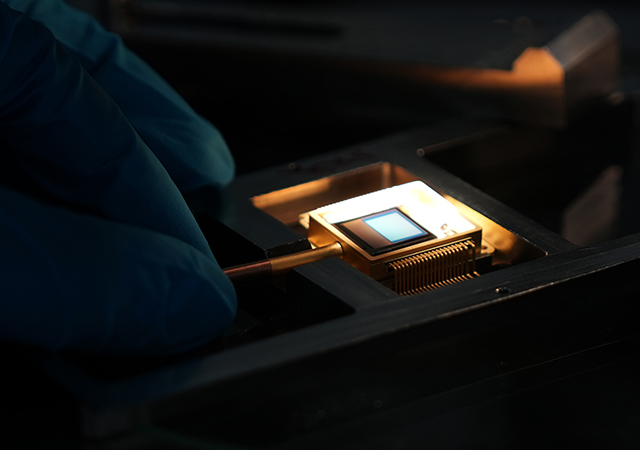Infrared imaging has revolutionized several industries, including surveillance, automotive, and healthcare. Fundamentally, it allows capturing and analyzing thermal radiation emitted by objects, enabling the detection of heat signatures or temperature patterns. The Microbolometer Infrared Focal Plane Array (IRFPA) technology has emerged as a significant advancement in the field of infrared imaging.

1.Understanding Microbolometer IRFPA
Microbolometer IRFPA is an advanced type of focal plane array that consists of a matrix of tiny infrared detectors. Each detector, known as a microbolometer, measures the thermal radiation emitted by objects and converts it into an electric signal. The microbolometers are typically made of materials with high temperature coefficient of resistance, such as vanadium oxide (VOx) or amorphous silicon (a-Si). These materials respond to changes in infrared radiation by altering their electrical resistance.
2.Working Principle
The working principle of microbolometer IRFPA involves several key steps:
Absorption: Incoming infrared radiation is absorbed by the detector material, causing a localized temperature rise.
Thermal isolation: Each microbolometer is thermally isolated from the surrounding components to prevent cross-talk and ensure accurate detection.
Resistance change: The temperature rise in the microbolometer leads to a change in its electrical resistance.
Readout circuitry: The resistance change is measured by readout circuitry, which converts it into an electric signal proportional to the incident infrared radiation.
Image construction: The signals from multiple microbolometers are combined to form a comprehensive image, indicating the distribution of thermal radiation.
3.Technological Progress
Over the years, microbolometer IRFPA technology has witnessed remarkable advancements, enhancing the performance and capabilities of infrared imaging systems. Some of the notable technological progress in this field are as follows:
Higher Sensitivity: Improvements in microbolometer design and the utilization of advanced materials have significantly increased the sensitivity of IRFPAs. This allows for the detection of even smaller temperature differences, enabling enhanced thermal analysis and object recognition.
Smaller Pixel Size: Shrinking the pixel size has allowed an increase in the number of detectors within a given array size. This advancement has led to higher-resolution infrared images, providing more detailed information for accurate analysis and decision-making.
Reduced Power Consumption: Efficient design techniques and optimized manufacturing processes have resulted in microbolometers with reduced power requirements. This has expanded the application potential of IRFPA technology, making it feasible for use in portable devices and battery-operated systems.
Integration with Other Technologies: Microbolometer IRFPAs have been successfully integrated with other imaging technologies. For instance, the combination of IRFPA with visible-light sensors or laser rangefinders produces multi-spectral images, enabling comprehensive analysis of various physical phenomena.
Cost Reduction: As production techniques have matured, the economies of scale have led to cost reduction in microbolometer IRFPA manufacturing. This cost-effectiveness has facilitated wider adoption of the technology in commercial applications, including smartphones, drones, and IoT devices.
Microbolometer IRFPA has played a vital role in advancing infrared imaging technology. Its ability to detect and convert thermal radiation into electrical signals has paved the way for a wide range of applications, from military and surveillance to industrial and medical fields. The continuous technological progress in terms of sensitivity, resolution, power consumption, integration, and affordability has made microbolometer IRFPA a crucial component in modern infrared imaging systems. As this technology evolves further, we can expect even more enhanced performance and novel applications in the near future.
Go Top